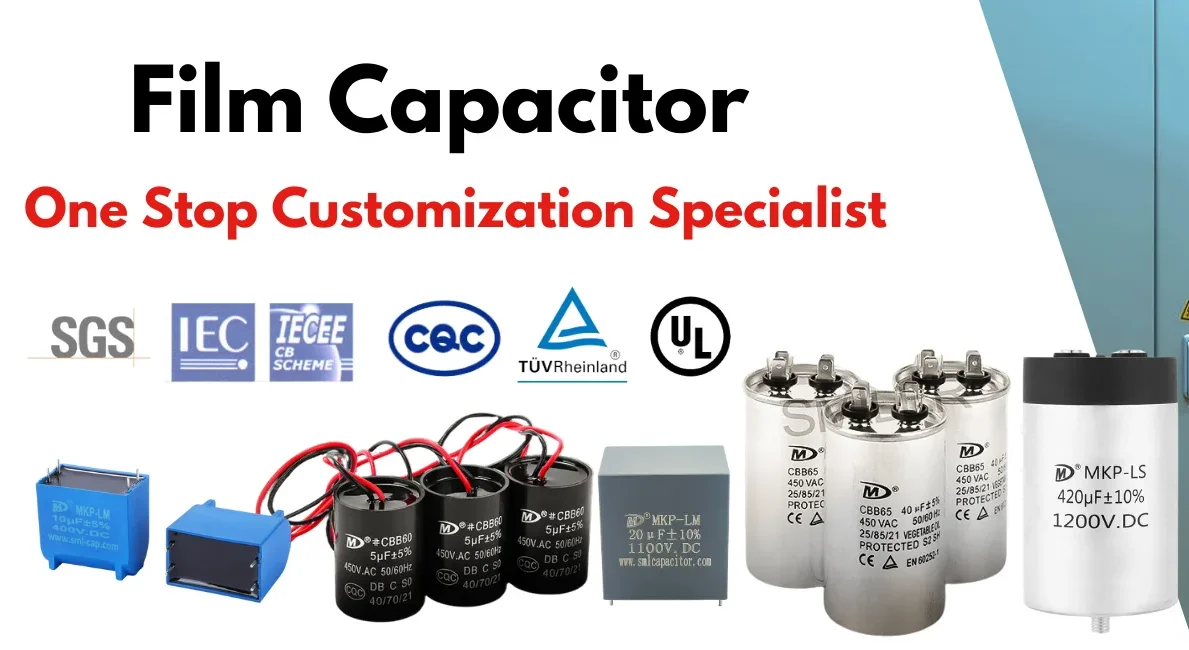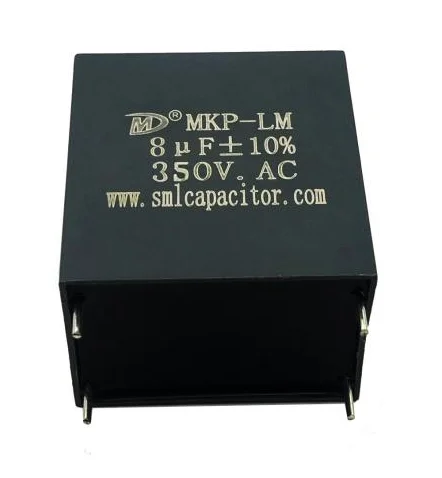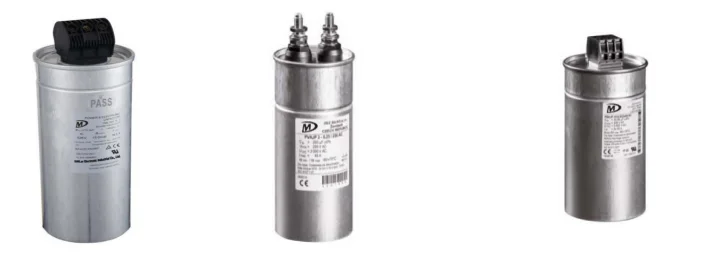 Capacitors are AC circuit devices with varying functions to achieve their operation effectively, e.g., the temporary storage of electric energy and regulation of the oscillation of voltage and elimination of unwanted noise or oscillating currents in the system, which is highly critical for such applications as power supply systems and effective motor starting. Capacitors are also essential in compensation for power by enhancing efficiency in configurations with the balancing of the phase difference between current and voltage. Moreover, their capability to handle high-frequency harmonics ensures performance in diverse electronic gadgets.
Capacitors are AC circuit devices with varying functions to achieve their operation effectively, e.g., the temporary storage of electric energy and regulation of the oscillation of voltage and elimination of unwanted noise or oscillating currents in the system, which is highly critical for such applications as power supply systems and effective motor starting. Capacitors are also essential in compensation for power by enhancing efficiency in configurations with the balancing of the phase difference between current and voltage. Moreover, their capability to handle high-frequency harmonics ensures performance in diverse electronic gadgets.
Resistance and impedance serve various roles with respect to currents like direct current (DC) and alternating current (AC). The variance is due to how they treat components, like capacitors and inductors in an AC circuit. Resistance does not change with the frequency of the AC signal. Impedance changes with frequency. This information is crucial in circuit design and operation.
The impedance (Z) of a capacitor in an AC circuit is provided by the formula:
Z = 1 / (2πfC)
Where:
1. Z is the impedance in ohms (Ω).
2. f is the frequency of the AC signal in hertz (Hz).
3. C is the capacitance in farads (F).
The formula shows that impedance decreases when frequency or capacitance increases, inversely proportional to both factors. When capacitors or a higher frequency is employed, the impedance reduces. This connection provides the reason why capacitors can filter high-frequency signals by offering impedance to such kinds of signals and not to low-frequency ones.
The position of frequency cannot be exaggerated while deciding on the impedance of a capacitor in an AC circuit arrangement. We observe that frequency is inversely proportional to impedance according to the equation ( Z = 1 / (2πfC)). With higher frequencies, the impedance decreases, and capacitors are therefore extremely useful for shielding high frequency signals. In contrast, with low frequencies, resistance tends to increase enormously, and this restricts the flow of electricity.
In processes like frequency harmonic treatment in AC filtering, low impedance value capacitors play a significant role in ensuring smooth functioning. This feature is particularly vital in gadgets that demand precise signal management. The efficiency in handling frequencies makes AC circuit capacitors indispensable in setups that aim for noise suppression or reduction of ripple currents.
The capacitance value determines the impedance value of a capacitor in an alternating current circuit. Larger capacitance values correspond to smaller impedance values. The characteristic makes capacitors of a capacitance value deliver larger amounts of current flow at a certain frequency.
In real life, capacitance is usually quantified in microfarads (μF). For instance, a 10 μF capacitor will have less resistance than a 1 μF capacitor for the same frequencies. This renders capacitors with capacitance suitable for use in situations that need copious amounts of current handling or effective storage of energy.
The choice of capacitance values is similarly determined according to the specifications of the circuit system, as in the case of systems for energy storage or reactive power compensation, higher capacitances are usually desirable to increase system stability and minimize voltage fluctuations, while smaller capacitances are more appropriate for circuits that require high-speed charge and discharge cycles.
SMILER provides a series of AC circuit capacitors suitable for application requirements, utilizing metallized polypropylene film as the dielectric and housed in durable aluminum or plastic casings to meet ruggedness demands. The capacitors are specifically designed for the provision of reactive power compensation performance and high frequency harmonic withstand capability. They are equipped with advanced safety functions like over-pressure cut-off protection circuits embedded inside them and are certified to standards, such as GB/T12747.
One thing that stands out about the AC circuit capacitors made by SMILER is how precisely the capacitance values are engineered. We pay attention to every detail and ensure a capacitance tolerance of ±5 % ( J ) and ±10 % ( K ). This high level of accuracy guarantees top-notch performance in AC circuits. In situations where precise management of electrical parameters is crucial. They excel at maintaining capacitance values even when operating conditions fluctuate, making them perfect for reactive power compensation and energy storage systems. This feature enables these capacitors to handle abrupt voltage surges and protect your electrical systems from potential harm.
 SMILER’s AC circuit capacitors are designed for longevity with a build that incorporates a metallized polypropylene film for insulation and an aluminum, such as the MKP-AM, casing for protection against wear and tear while also facilitating efficient heat dissipation. The use of oil filling in the potting helps maintain optimal operating temperatures and extends the lifespan of these capacitors.
SMILER’s AC circuit capacitors are designed for longevity with a build that incorporates a metallized polypropylene film for insulation and an aluminum, such as the MKP-AM, casing for protection against wear and tear while also facilitating efficient heat dissipation. The use of oil filling in the potting helps maintain optimal operating temperatures and extends the lifespan of these capacitors.
These capacitors are also fitted with advanced safety features, like built-in over-pressure cut-off protection devices for added safety measures in conditions to avoid serious malfunctions from occurring. SMILER’s capacitors provide reliability with a lifespan of up to 100,000 hours, operating at the rated voltage (VR ) and 70°C temperature.
Precise calculations of impedance play a role in maximizing the efficiency of AC circuits. SMILER's capacitors for AC circuits streamline this task by providing specific specifications. For instance, the capacitance options vary from 0.33 μF to 4000 μF to meet a range of application demands. Engineers can easily identify these values marked clearlyon each capacitor, enabling them to choose the component for their particular needs.
 The capacitors offer flexibility when it comes to voltage range, too. The MKP-AL offers a voltage range from 300 volts to 690 volts AC. It can be used across various settings including power system reactive power compensation and energy storage needs. Their low ESR values help with energy transmission while keeping heat generation to a minimum during use.
The capacitors offer flexibility when it comes to voltage range, too. The MKP-AL offers a voltage range from 300 volts to 690 volts AC. It can be used across various settings including power system reactive power compensation and energy storage needs. Their low ESR values help with energy transmission while keeping heat generation to a minimum during use.
SMILER's innovation know-how and love for innovation ensure that its AC circuit capacitors are a trustworthy option for engineers and technicians. Whether you're designing a new system or are in the process of upgrading an existing one, these capacitors provide the accuracy and dependability needed for top-quality operation.
A: The Function of a Capacitor in an AC Circuit. Capacitors are simple electronic components that store energy in the form of an electrostatic field. A capacitor is charged when the AC is at peak in an AC circuit and releases the charge when the AC is at valley.
A: The motor operates excessively due to a malfunctioning capacitor that heats it up and produces a burning odor. But you may not sense the electrical smell because the capacitor is external.
A: To replace an AC capacitor, you can budget between $1 and $100 based on the kind of capacitor and its position.
A: Although replacing an AC capacitor may be easy to do, it's usually not advisable to do so yourself.